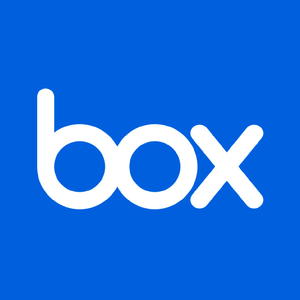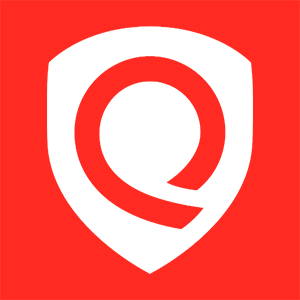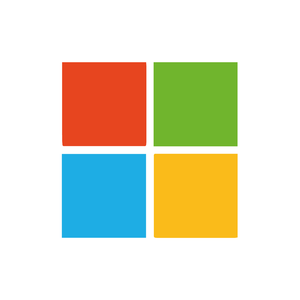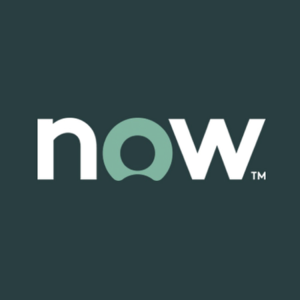
RingCentral (RNG)
RingCentral is in for a bumpy ride. Its decelerating growth shows demand is falling and its weak gross margin indicates it has bad unit economics.― StockStory Analyst Team
1. News
2. Summary
Why We Think RingCentral Will Underperform
Built on its proprietary Message Video Phone (MVP) platform that unifies multiple communication methods, RingCentral (NYSE:RNG) provides AI-driven cloud communications and collaboration solutions that enable businesses to connect through voice, video, messaging, and contact center services.
- Average billings growth of 4.2% over the last year was subpar, suggesting it struggled to push its software and might have to lower prices to stimulate demand
- Estimated sales growth of 4.5% for the next 12 months implies demand will slow from its two-year trend
- Extended payback periods on sales investments suggest the company’s platform isn’t resonating enough to drive efficient sales conversions


RingCentral doesn’t measure up to our expectations. There are more promising prospects in the market.
Why There Are Better Opportunities Than RingCentral
High Quality
Investable
Underperform
Why There Are Better Opportunities Than RingCentral
At $29.51 per share, RingCentral trades at 1x forward price-to-sales. RingCentral’s valuation may seem like a bargain, but we think there are valid reasons why it’s so cheap.
We’d rather pay up for companies with elite fundamentals than get a bargain on weak ones. Cheap stocks can be value traps, and as their performance deteriorates, they will stay cheap or get even cheaper.
3. RingCentral (RNG) Research Report: Q3 CY2025 Update
Cloud communications provider RingCentral (NYSE:RNG) met Wall Streets revenue expectations in Q3 CY2025, with sales up 4.9% year on year to $638.7 million. On the other hand, next quarter’s revenue guidance of $622 million was less impressive, coming in 3.8% below analysts’ estimates. Its non-GAAP profit of $1.13 per share was 5.2% above analysts’ consensus estimates.
RingCentral (RNG) Q3 CY2025 Highlights:
- Revenue: $638.7 million vs analyst estimates of $635.6 million (4.9% year-on-year growth, in line)
- Adjusted EPS: $1.13 vs analyst estimates of $1.07 (5.2% beat)
- Adjusted Operating Income: $103.9 million vs analyst estimates of $143.7 million (16.3% margin, 27.7% miss)
- Revenue Guidance for Q4 CY2025 is $622 million at the midpoint, below analyst estimates of $646.7 million
- Management raised its full-year Adjusted EPS guidance to $4.31 at the midpoint, a 1.2% increase
- Operating Margin: 0%, in line with the same quarter last year
- Free Cash Flow Margin: 20.3%, down from 23.3% in the previous quarter
- Billings: $637.2 million at quarter end, up 4.9% year on year
- Market Capitalization: $2.73 billion
Company Overview
Built on its proprietary Message Video Phone (MVP) platform that unifies multiple communication methods, RingCentral (NYSE:RNG) provides AI-driven cloud communications and collaboration solutions that enable businesses to connect through voice, video, messaging, and contact center services.
RingCentral's solutions serve a diverse range of industries including financial services, healthcare, education, retail, and technology. The company's flagship offering, RingCentral MVP, integrates team messaging, video meetings, and cloud phone systems into a unified experience that works across smartphones, tablets, PCs, and desk phones. This location-independent approach allows distributed and mobile workforces to communicate with a single identity regardless of where employees are working.
Beyond its core MVP platform, RingCentral offers a comprehensive portfolio including contact center solutions (RingCentral Contact Center and RingCX), video meeting services (RingCentral Video), and event management capabilities following its acquisition of Hopin Events. The company has also expanded into AI with RingSense, which analyzes conversation data to provide insights for sales teams.
RingCentral generates revenue primarily through subscription plans with monthly, annual, or multi-year terms. The company employs both direct sales teams and indirect channels, including partnerships with major telecommunications providers such as AT&T, Vodafone, BT, and Deutsche Telekom. These strategic relationships allow RingCentral to extend its market reach while telecommunications companies can offer cloud communications solutions to their customer bases without developing the technology themselves.
RingCentral emphasizes open platform capabilities, allowing customers and third-party developers to integrate its services with popular business applications like Salesforce, Microsoft 365, Google Workspace, and Zendesk through APIs and SDKs. This integration ecosystem helps businesses streamline workflows and enhance productivity.
4. Video Conferencing
Work is becoming more distributed, both across geographies and devices. In order for businesses to keep functioning efficiently, they need to be able to communicate as well as they did when the teams were co-located, which drives the demand for integrated communication platforms.
RingCentral competes with traditional on-premise communications providers like Avaya and Cisco, cloud-based communications companies including 8x8, Nextiva, and Vonage (acquired by Ericsson), and major technology players such as Microsoft Teams, Zoom, and Google. In the contact center space, RingCentral faces competition from Five9, NICE inContact, Genesys, and Twilio.
5. Revenue Growth
Reviewing a company’s long-term sales performance reveals insights into its quality. Any business can put up a good quarter or two, but many enduring ones grow for years. Over the last five years, RingCentral grew its sales at a decent 17.7% compounded annual growth rate. Its growth was slightly above the average software company and shows its offerings resonate with customers.
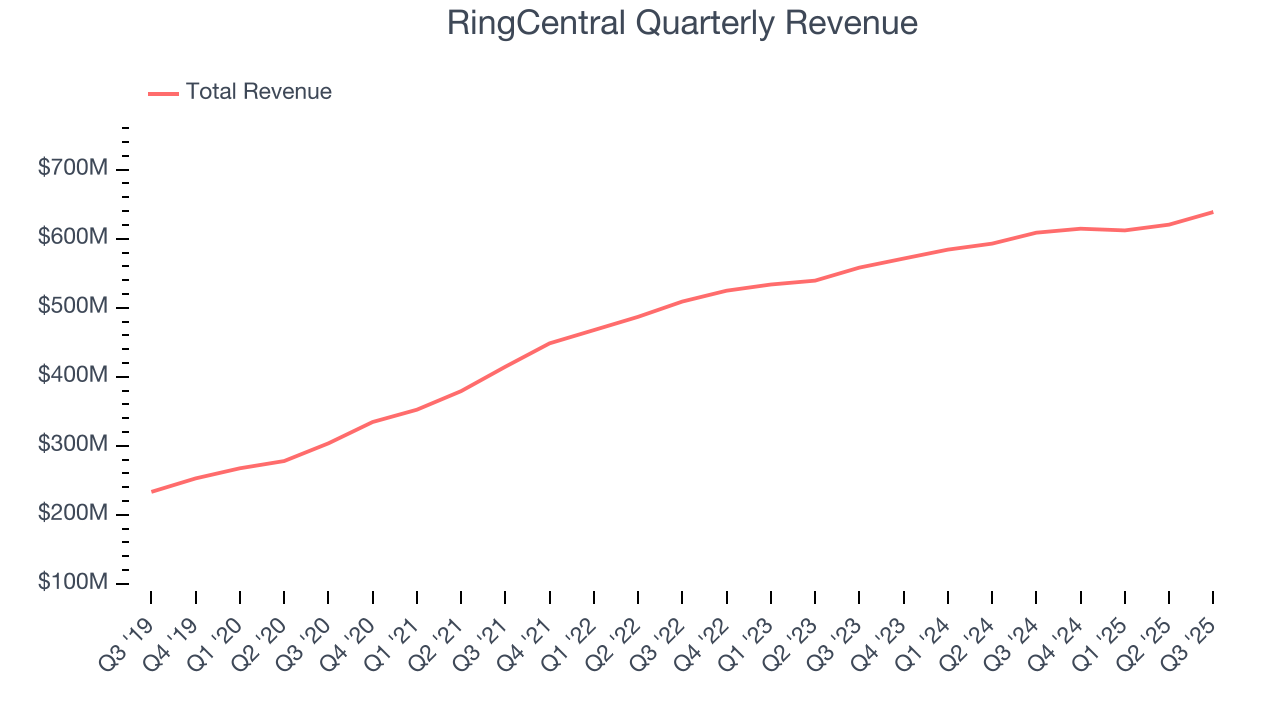
We at StockStory place the most emphasis on long-term growth, but within software, a half-decade historical view may miss recent innovations or disruptive industry trends. RingCentral’s recent performance shows its demand has slowed as its annualized revenue growth of 7.4% over the last two years was below its five-year trend. 
This quarter, RingCentral grew its revenue by 4.9% year on year, and its $638.7 million of revenue was in line with Wall Street’s estimates. Company management is currently guiding for a 1.2% year-on-year increase in sales next quarter.
Looking further ahead, sell-side analysts expect revenue to grow 5.2% over the next 12 months, a slight deceleration versus the last two years. This projection is underwhelming and suggests its products and services will see some demand headwinds.
6. Billings
Billings is a non-GAAP metric that is often called “cash revenue” because it shows how much money the company has collected from customers in a certain period. This is different from revenue, which must be recognized in pieces over the length of a contract.
RingCentral’s billings came in at $637.2 million in Q3, and over the last four quarters, its growth was underwhelming as it averaged 4.2% year-on-year increases. This performance mirrored its total sales and suggests that increasing competition is causing challenges in acquiring/retaining customers. 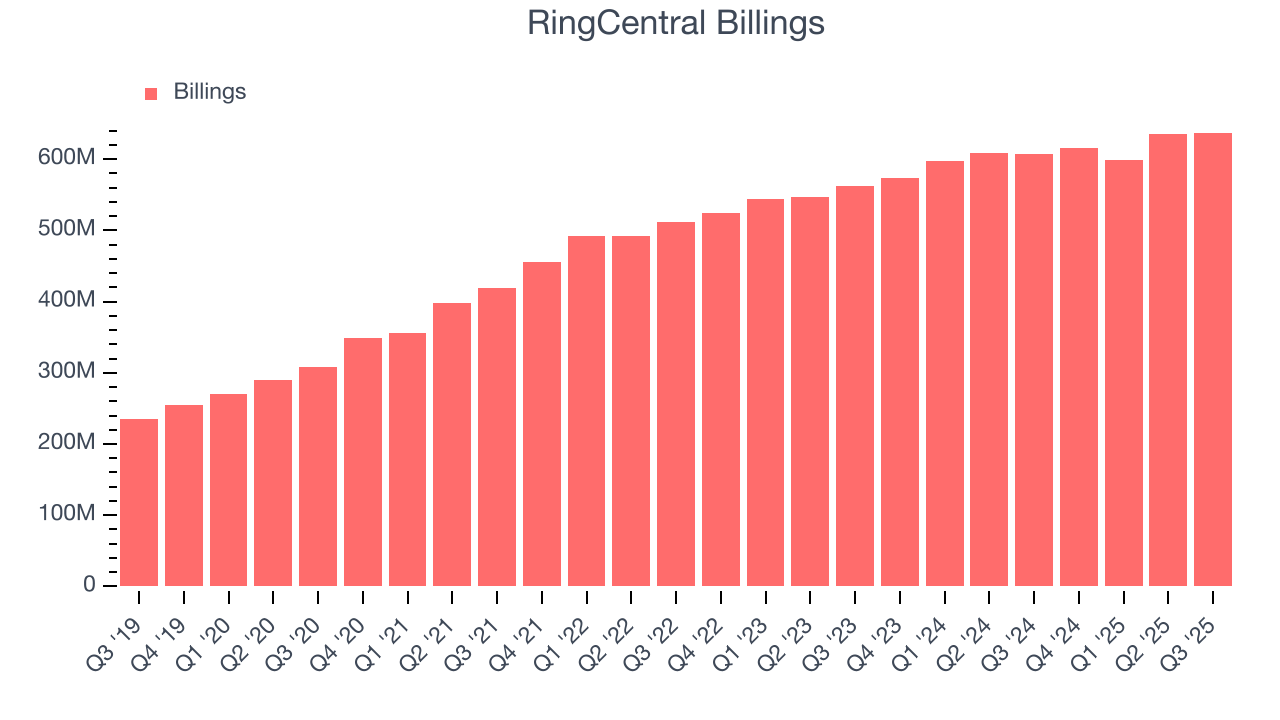
7. Customer Acquisition Efficiency
The customer acquisition cost (CAC) payback period measures the months a company needs to recoup the money spent on acquiring a new customer. This metric helps assess how quickly a business can break even on its sales and marketing investments.
RingCentral’s recent customer acquisition efforts haven’t yielded returns as its CAC payback period was negative this quarter, meaning its incremental sales and marketing investments outpaced its revenue. The company’s inefficiency indicates it operates in a highly competitive environment where there is little differentiation between RingCentral’s products and its peers.
8. Gross Margin & Pricing Power
For software companies like RingCentral, gross profit tells us how much money remains after paying for the base cost of products and services (typically servers, licenses, and certain personnel). These costs are usually low as a percentage of revenue, explaining why software is more lucrative than other sectors.
RingCentral’s gross margin is slightly below the average software company, giving it less room than its competitors to invest in areas such as product and sales. As you can see below, it averaged a 71.1% gross margin over the last year. Said differently, RingCentral had to pay a chunky $28.87 to its service providers for every $100 in revenue.
The market not only cares about gross margin levels but also how they change over time because expansion creates firepower for profitability and free cash generation. RingCentral has seen gross margins improve by 1.5 percentage points over the last 2 year, which is solid in the software space.

RingCentral produced a 71.8% gross profit margin in Q3, marking a 1.2 percentage point increase from 70.5% in the same quarter last year. Zooming out, the company’s full-year margin has remained steady over the past 12 months, suggesting its input costs have been stable and it isn’t under pressure to lower prices.
9. Operating Margin
RingCentral has done a decent job managing its cost base over the last year. The company has produced an average operating margin of 2.5%, higher than the broader software sector.
Looking at the trend in its profitability, RingCentral’s operating margin rose by 5 percentage points over the last two years, as its sales growth gave it operating leverage.

In Q3, RingCentral’s breakeven margin was in line with the same quarter last year. This indicates the company’s cost structure has recently been stable.
10. Cash Is King
Free cash flow isn't a prominently featured metric in company financials and earnings releases, but we think it's telling because it accounts for all operating and capital expenses, making it tough to manipulate. Cash is king.
RingCentral has shown impressive cash profitability, giving it the option to reinvest or return capital to investors. The company’s free cash flow margin averaged 20.8% over the last year, better than the broader software sector.

RingCentral’s free cash flow clocked in at $129.5 million in Q3, equivalent to a 20.3% margin. This result was good as its margin was 3 percentage points higher than in the same quarter last year, but we wouldn’t put too much weight on the short term because investment needs can be seasonal, causing temporary swings. Long-term trends are more important.
Over the next year, analysts’ consensus estimates show they’re expecting RingCentral’s free cash flow margin of 20.8% for the last 12 months to remain the same.
11. Balance Sheet Assessment
RingCentral reported $145.4 million of cash and $1.27 billion of debt on its balance sheet in the most recent quarter. As investors in high-quality companies, we primarily focus on two things: 1) that a company’s debt level isn’t too high and 2) that its interest payments are not excessively burdening the business.
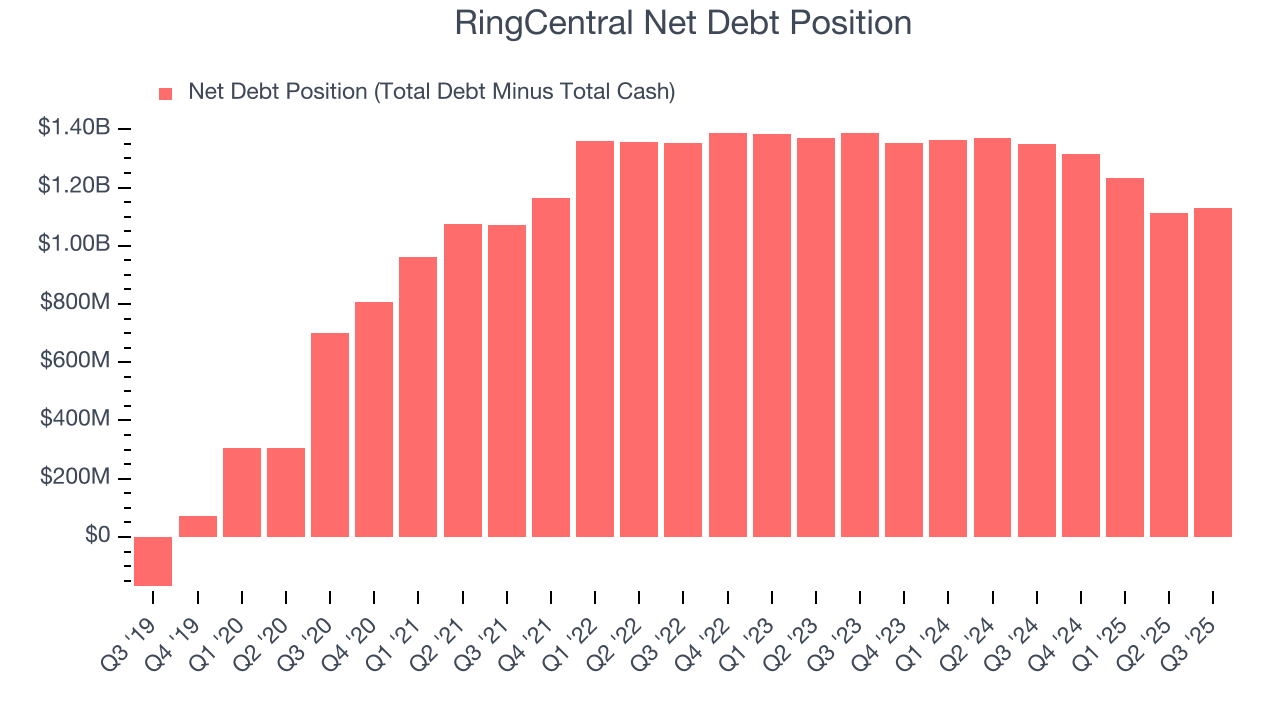
With $637.2 million of EBITDA over the last 12 months, we view RingCentral’s 1.8× net-debt-to-EBITDA ratio as safe. We also see its $53.35 million of annual interest expenses as appropriate. The company’s profits give it plenty of breathing room, allowing it to continue investing in growth initiatives.
12. Key Takeaways from RingCentral’s Q3 Results
It was good to see RingCentral provide full-year EPS guidance that slightly beat analysts’ expectations. On the other hand, its adjusted operating profit missed. Additionally, revenue guidance for next quarter missed and billings were just in line with Wall Street’s estimates. Overall, this was a softer quarter. The stock traded down 2.7% to $29.10 immediately after reporting.
13. Is Now The Time To Buy RingCentral?
Updated: December 4, 2025 at 9:18 PM EST
Before investing in or passing on RingCentral, we urge you to understand the company’s business quality (or lack thereof), valuation, and the latest quarterly results - in that order.
We see the value of companies addressing major business pain points, but in the case of RingCentral, we’re out. Although its revenue growth was solid over the last five years, it’s expected to deteriorate over the next 12 months and its customer acquisition is less efficient than many comparable companies. And while the company’s strong free cash flow generation gives it reinvestment options, the downside is its ARR has disappointed and shows the company is having difficulty retaining customers and their spending.
RingCentral’s price-to-sales ratio based on the next 12 months is 1x. This valuation multiple is fair, but we don’t have much confidence in the company. There are more exciting stocks to buy at the moment.
Wall Street analysts have a consensus one-year price target of $32.82 on the company (compared to the current share price of $29.45).


